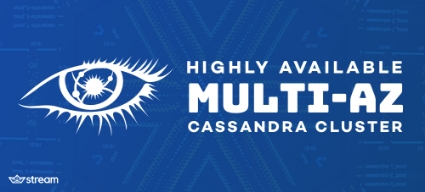Mesosphere Declares ‘Container 2.0,’ the Stateful Era
 There's a growing effort to create stateful containers.
There's a growing effort to create stateful containers.
 There's a growing effort to create stateful containers.
There's a growing effort to create stateful containers.
In our last post on BGP code, we unraveled the call chain snaproute’s Go BGP implementation uses to bring a peer up. Let’s look at this call chain a bit more to see if we can figure out what it actually does—or rather, how it actually works. I’m going to skip the actual beginning of the FSM itself, and just move to the first state, looking at how the FSM is designed to move from state to state. The entire thing kicks off here—
func (st *IdleState) processEvent(event BGPFSMEvent, data interface{}) {
st.logger.Info(fmt.Sprintln("Neighbor:", st.fsm.pConf.NeighborAddress, "FSM:", st.fsm.id,
"State: Idle Event:", BGPEventTypeToStr[event]))
switch event {
case BGPEventManualStart, BGPEventAutoStart:
st.fsm.SetConnectRetryCounter(0)
st.fsm.StartConnectRetryTimer()
st.fsm.ChangeState(NewConnectState(st.fsm))
....
}
What we need to do is chase down each of these three calls to figure out what they actually do. The first is simple—it just sets a retry counter (connectRetryCounter) to 0, indicating we haven’t tried to restart this peer at all. In other words, this is the first attempt to move from idle to a full peering relationship. This counter is primarily used for telemetry, which means it’s a counter used to show you, Continue reading
 Verizon is likely buying the company for its customers, not its technology.
Verizon is likely buying the company for its customers, not its technology.

This is a guest post by Alessandro Pieri, Software Architect at Stream. Try out this 5 minute interactive tutorial to learn more about Stream’s API.
Originally built by Facebook in 2009, Apache Cassandra is a free and open-source distributed database designed to handle large amounts of data across a large number of servers. At Stream, we use Cassandra as the primary data store for our feeds. Cassandra stands out because it’s able to:
Shard data automatically
Handle partial outages without data loss or downtime
Scales close to linearly
If you’re already using Cassandra, your cluster is likely configured to handle the loss of 1 or 2 nodes. However, what happens when a full availability zone goes down?
In this article you will learn how to setup Cassandra to survive a full availability zone outage. Afterwards, we will analyze how moving from a single to a multi availability zone cluster impacts availability, cost, and performance.
The post Worth Reading: Learning is hard appeared first on 'net work.
 Organizations that embrace a two-tier network architecture will be more likely to thrive in the future.
Organizations that embrace a two-tier network architecture will be more likely to thrive in the future.
The judges have deliberated, our community has voted, and the results are in! We are happy to announce the top 5 submissions of the Docker 1.12 Hackathon.
In case you missed it, the theme of the hackathon was to build, ship, and run a distributed software application using a release candidate of Docker 1.12. We encouraged participants to hack the new features included in Docker 1.12, such as: Swarm Mode, Cryptographic node identity, Service API, and Build-in routing mesh.
 Network virtualization (NV) is starting to blur the lines between the LAN and the WAN.
Network virtualization (NV) is starting to blur the lines between the LAN and the WAN.
 Savvius' Vigil 2.0 will complement IBM QRadar in archiving suspicious network traffic.
Savvius' Vigil 2.0 will complement IBM QRadar in archiving suspicious network traffic.